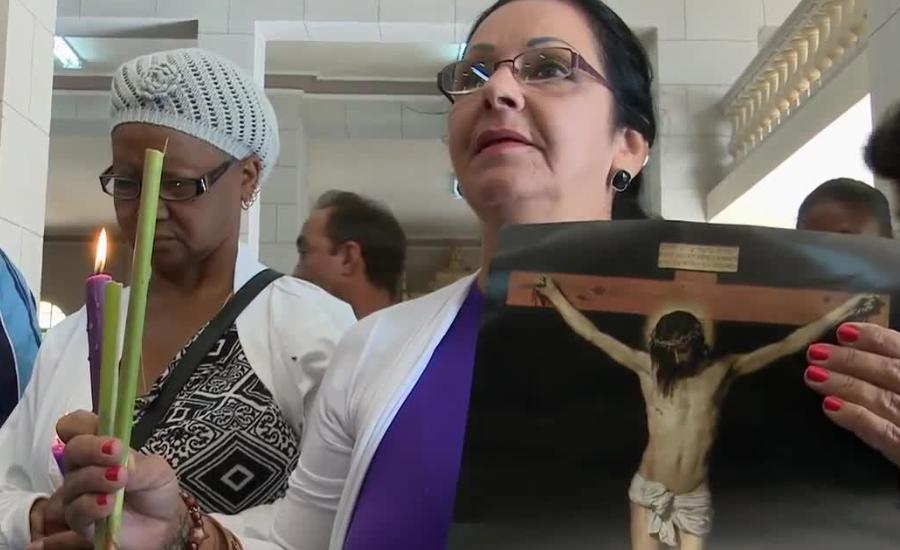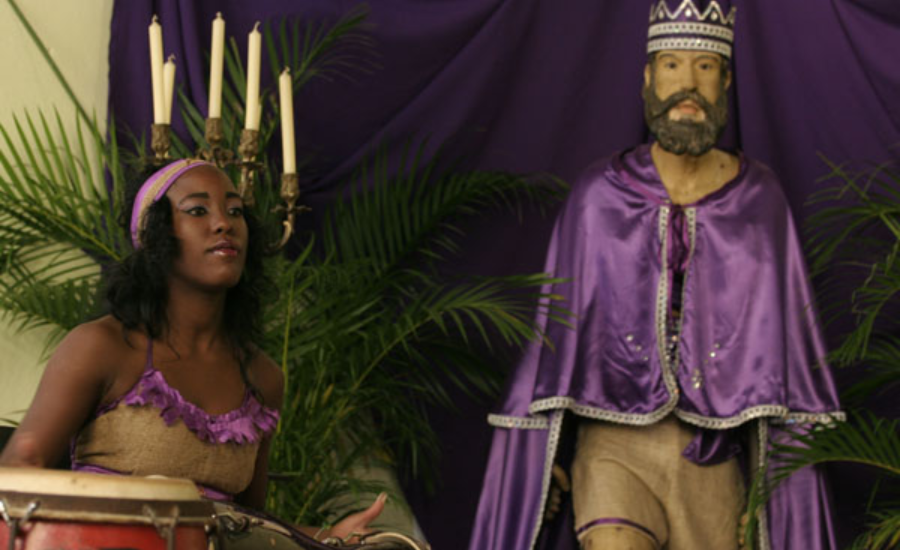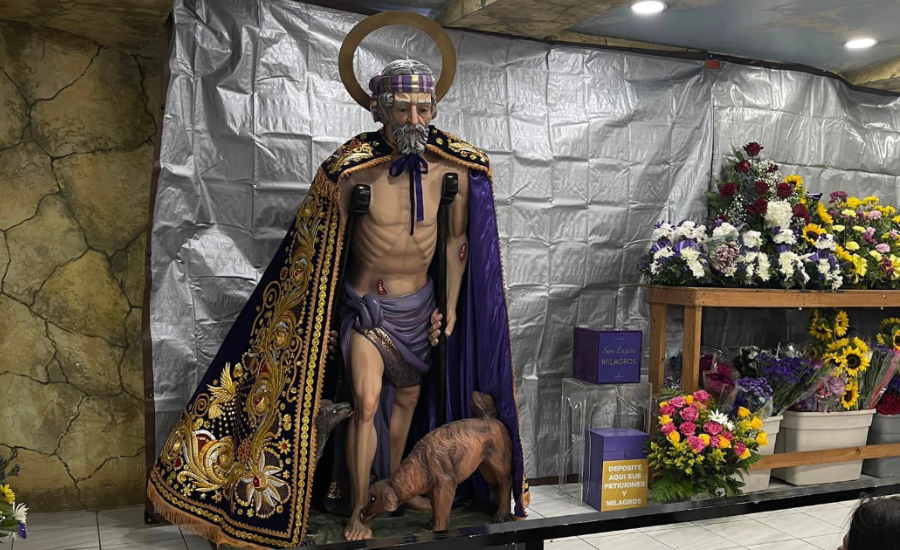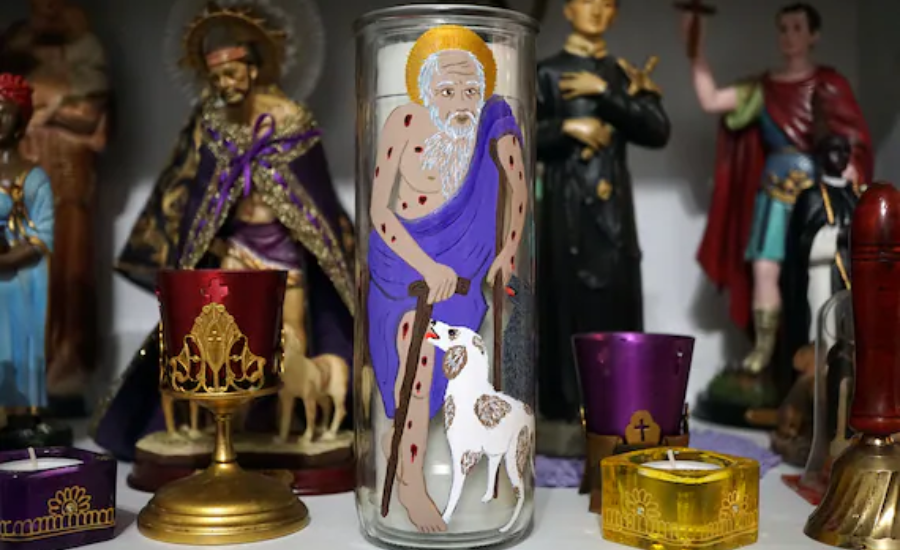St lazarus abba kwi cuban commonly known as San Lázaro, holds profound cultural, spiritual, and historical importance, particularly within Cuba and among Cuban communities worldwide. His figure is revered not only in Catholic traditions but also within Afro-Cuban religions such as Santería, where he is associated with Babalú-Ayé, the orisha of illness and healing. This blend of beliefs highlights the syncretism that is a hallmark of Cuban spirituality. The veneration of St. Lazarus dates back to the colonial period when African slaves merged their religious practices with Catholicism. As a result, St. Lazarus became a symbol of hope, resilience, and healing, deeply embedded in the religious and cultural fabric of Cuban society. His feast day on December 17 is one of the most significant religious events in Cuba, drawing thousands of worshippers who participate in pilgrimages, often to the renowned shrine of Rincón, seeking blessings and miracles.
Beyond his religious importance, St. Lazarus is a cultural icon representing the struggles and endurance of the Cuban people. The customs surrounding his worship, including barefoot pilgrimages, processions, and offerings, reflect the deep connection between the Cuban people and their patron saint. These traditions are a powerful expression of Cuban identity, blending spiritual devotion with cultural heritage. The widespread adoration of St. Lazarus highlights the role of religious figures in shaping and reflecting the identities of their followers, demonstrating how faith can unite people across different backgrounds and contexts. By understanding the significance of St. Lazarus Abba Kwi, one gains insight into the rich tapestry of Cuban cultural and spiritual life, illustrating the enduring influence of this revered figure on both a personal and communal level.
Who is St. Lazarus Abba Kwi?
St lazarus abba kwi cuban is a revered figure in Cuban religious practices, and his identity is shaped by two notable biblical references. The first is Lazarus of Bethany, known from the Gospel of John, where he is resurrected by Jesus after being dead for four days. This story highlights themes of faith, hope, and the miraculous power of Jesus, symbolizing the victory of life over death. The second reference is from a parable in the Gospel of Luke, which features a poor beggar named Lazarus who, after enduring suffering in life, finds comfort in heaven, while a wealthy man who ignored his plight is condemned to eternal suffering. This parable conveys messages about justice, compassion, and the afterlife.
In Cuban religious traditions, St. Lazarus Abba Kwi represents a unique blend of these two biblical figures and incorporates elements from Yoruba spirituality, which was brought to Cuba by African slaves. Within this syncretic belief system, St. Lazarus is not only associated with Christian virtues of faith and resurrection but also embodies the qualities of Babalú-Ayé, the orisha associated with healing and diseases in Yoruba religion. This merging of beliefs creates a multifaceted figure who resonates deeply with Cubans, symbolizing healing, hope, and the blending of different cultural and religious influences.
Exploring the Meaning of Abba Kwi

“Abba Kwi” might not be a familiar term to many, but it holds significant meaning in the religious practices of certain Cuban spiritual communities. The phrase blends elements of religious devotion with culturally specific interpretations, reflecting the unique way St. Lazarus is honored in these traditions.
Though the exact definition of “Abba Kwi” can differ depending on the community or context, it generally serves as a respectful title that underscores the deep reverence for St. Lazarus within the syncretic religious practices found in Cuba. This term highlights how Cuban spirituality often combines aspects of various faiths, creating a distinct approach to worship and veneration.
St. Lazarus: A Symbol of Resilience and Hope
For many Cubans, St. Lazarus transcends the role of a religious figure; he embodies the resilience and enduring spirit of the Cuban people. Represented as a figure who endures suffering yet offers healing and compassion, St. Lazarus resonates deeply with communities that have historically faced hardship and adversity. His veneration is particularly strong among those who have been marginalized, making him a powerful symbol of hope and solidarity.
The Pilgrimage to El Rincón: A Testament of Faith

One of the most important religious events in Cuba is the annual pilgrimage to El Rincón, a small village near Havana, held on December 17th. Thousands of devotees from all over Cuba and beyond make this journey to honor St. Lazarus. The pilgrimage is marked by acts of devotion that include crawling on hands and knees over long distances to fulfill vows or seek favors, carrying heavy crosses as a form of penance, and offering candles and flowers at the shrine. This event uniquely blends Christian and Afro-Cuban religious practices, showcasing the rich and diverse spiritual landscape of Cuba.
Devotional Practices: Honoring St. Lazarus at Home
Worshipers of St. Lazarus Abba Kwi often maintain altars in their homes where they engage in regular rituals. These rituals commonly include lighting candles to seek blessings or healing, offering flowers and herbs as signs of reverence, and presenting food offerings such as roasted pork or fruits, reflecting traditional Cuban culinary practices. These devotional practices highlight the close and personal connection that believers feel with St. Lazarus, seeing him as a guardian who is attentive to their everyday needs.
The Profound Link Between St. Lazarus and Santería

This blending of St. Lazarus with Babalu Aye is a prime example of how Afro-Cuban religious traditions have maintained their African roots while integrating Catholic elements. The combined figure represents both physical and spiritual healing, reflecting the dual nature of faith within the community.
Rituals and Offerings to Babalu Aye
Santería rituals honoring Babalu Aye often include specific practices designed to invoke his healing power. These rituals may involve the sacrifice of small animals, a traditional offering to seek favor and protection. Herbal baths are another common practice, used for spiritual cleansing and to harness the healing energies of Babalu Aye/St. Lazarus. Dance ceremonies, featuring energetic drumming and rhythmic movements, are integral to these rituals, showcasing the African influence that permeates Santería. These practices underscore the adaptability of religious identity in Cuba, where traditions evolve to meet the spiritual needs of a diverse population.
The Healing Powers of St. Lazarus Abba Kwi
Believers often look to St. Lazarus Abba Kwi for healing, whether they are struggling with physical illnesses or emotional pain. His reputation as a healer is well-known, with many Cubans believing in his power to cure various ailments. As a sign of faith and protection, some carry medallions or wear images of St. Lazarus, trusting that his presence will shield them from sickness.
Stories of Miracles and Faith
Numerous Cubans have shared stories of miraculous healings attributed to the intervention of St. Lazarus, passed down through generations. These personal testimonies add to the saint’s aura of mystique and solidify his reputation as a compassionate and powerful figure. For many, these stories serve as a source of hope and assurance that St. Lazarus is always willing to listen and help those in need.
Cultural Fusion in Cuban Spirituality

1. Blending of Christianity and African Spirituality: Cuban religious practices vividly illustrate the intersection of Christianity and African spirituality. The veneration of St. Lazarus Abba Kwi exemplifies this unique blend, combining elements from both traditions to form a distinct religious identity that reflects Cuba’s diverse cultural heritage.
2. Syncretism and Coexistence: Syncretism in Cuba allows for the harmonious coexistence of Catholicism and Santería. Many practitioners seamlessly incorporate elements of both faiths into their rituals, demonstrating how these spiritual traditions can overlap and complement one another without conflict.
3. Evolution of Cultural Traditions: As new generations engage with religious practices, Cuban spirituality continues to evolve. The merging of different faiths, beliefs, and rituals reflects an ongoing process of reinterpretation, showing how cultural traditions adapt and transform over time.
4. Rich Spiritual Landscape: This cultural fusion creates a rich and dynamic spiritual landscape in Cuba. The coexistence of diverse traditions within the same cultural space fosters a unique spiritual environment where various beliefs and practices come together in harmony.
Honoring St. Lazarus Abba Kwi: Ways to Show Reverence
1. Create a Dedicated Altar: Set up a special space in your home to honor St. Lazarus Abba Kwi. Place a statue or image of the saint on the altar, and surround it with candles, flowers, and meaningful offerings. This personal altar serves as a focal point for your devotion and allows for a daily connection with St. Lazarus.
2. Light Candles Regularly: Light candles each Wednesday, a day traditionally associated with St. Lazarus, as a gesture of reverence. Use this time to seek his protection and blessings, reflecting on your needs and desires for guidance or healing.
3. Recite Prayers: Offer prayers to St. Lazarus Abba Kwi, asking for his support in times of hardship or uncertainty. Tailor your prayers to your specific needs, whether it’s for healing, protection, or general guidance, and make it a regular practice.
4. Participate in Pilgrimages: If you have the opportunity to be in Cuba, consider joining the annual pilgrimage to El Rincón. This significant event is a powerful way to honor St. Lazarus, connect with his legacy, and engage in the communal aspect of devotion shared by many followers.
The Enduring Influence of St. Lazarus Abba Kwi
1. Global Spread Among Cuban Diaspora: St. Lazarus Abba Kwi remains a significant figure not only within Cuba but also among Cuban communities around the world.
2. Symbol of Perseverance: In today’s world, marked by economic challenges and social inequalities, St. Lazarus embodies resilience and hope. His personal trials and ultimate healing resonate deeply with individuals facing their own difficulties, serving as a powerful reminder of enduring strength through adversity.
3. Fostering Community and Compassion: Devotion to St. Lazarus Abba Kwi cultivates a sense of unity and compassion among followers. The shared belief in his ability to provide solace and support strengthens community bonds and promotes a collective sense of empathy and mutual support.
4. Emblem of Healing and Recovery: St. Lazarus symbolizes the potential for healing and recovery, both physically and spiritually. His image inspires hope for overcoming obstacles and emerging stronger, offering a beacon of light for those seeking renewal and resilience in their lives.
FAQs About St. Lazarus Abba Kwi
1. Who is St. Lazarus Abba Kwi?
St. Lazarus Abba Kwi, also known as San Lázaro, is a revered figure in Cuban religious traditions. He represents a unique blend of Christian and Afro-Cuban spiritual elements.
2. What is the significance of “Abba Kwi”?
“Abba Kwi” is a term used within certain Cuban spiritual practices to denote deep reverence for St. Lazarus. While the exact meaning can vary, it generally signifies a respectful and venerated title, reflecting the saint’s importance in both Christian and Afro-Cuban contexts.
3. How is St. Lazarus Abba Kwi honored in Cuba?
Devotion to St. Lazarus includes creating home altars, lighting candles, offering prayers, and participating in the annual pilgrimage to El Rincón. The pilgrimage, held on December 17th, involves acts of penance and devotion, such as crawling long distances or carrying heavy crosses.
4. What are some common rituals associated with St. Lazarus in Santería?
These practices reflect the integration of African spiritual traditions with Catholic elements.
5. How does St. Lazarus impact the Cuban diaspora?
St. Lazarus remains a significant figure among Cuban communities worldwide. His veneration is a means of connecting with cultural and spiritual heritage, fostering a sense of unity and resilience among Cuban expatriates.
Conclusion
St. Lazarus Abba Kwi stands as a profound symbol of hope, resilience, and cultural fusion within Cuban spirituality. His unique position at the intersection of Christian and Afro-Cuban beliefs illustrates the rich tapestry of Cuban religious life. Through his association with both Lazarus of Bethany and Babalú-Ayé, he embodies a blend of faith, healing, and perseverance that resonates deeply with his devotees.
As Cuban communities continue to grow and spread globally, the veneration of St. Lazarus offers a powerful testament to the enduring strength of cultural and spiritual traditions. His story serves as a beacon of hope and unity, demonstrating the remarkable ability of faith to bridge different worlds and bring people together in shared devotion and understanding.
Stay in touch for more updates and alerts: AiyiFan!
